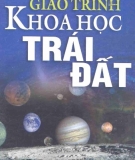Tài liệu Thư viện số
- Đề tài NCKH (820)
- Luận văn thạc sĩ (3574)
- Luận án tiến sĩ (122)
- Lý luận chính trị (375)
- Lịch sử (793)
- Ngữ văn (735)
- Quản lý nhà nước (106)
- Báo chí - Truyền thông (341)
- Sinh học (701)
- Hóa học (668)
- Toán học (796)
- Vật lý (635)
- Đông phương học (102)
- Môi trường (804)
- Công nghệ thông tin (707)
- Điện tử viễn thông (477)
- Kiến trúc (285)
- Địa lý - Địa chất (803)
- Công tác xã hội - Xã hội học (672)
- Tài liệu tham khảo khác (453)
Danh mục TaiLieu.VN
- Mẫu Slide Powerpoint
- Luận Văn - Báo Cáo (344720)
- Kinh Doanh Marketing (65512)
- Kinh Tế - Quản Lý (48934)
- Tài Chính - Ngân Hàng (55898)
- Công Nghệ Thông Tin (142209)
- Tiếng Anh - Ngoại Ngữ (47066)
- Kỹ Thuật - Công Nghệ (134345)
- Khoa Học Tự Nhiên (107174)
- Khoa Học Xã Hội (82451)
- Văn Hoá - Nghệ Thuật (54408)
- Y Tế - Sức Khoẻ (173915)
- Nông - Lâm - Ngư (62504)
- Kỹ Năng Mềm (29016)
- Biểu Mẫu - Văn Bản (27610)
- Giải Trí - Thư Giãn (51994)
- Văn Bản Luật (198854)
- Tài Liệu Phổ Thông (402015)
- Trắc Nghiệm Online (213578)
- Trắc Nghiệm MBTI
- Trắc Nghiệm Holland
Tài liệu nổi bật
Kết quả 8545-8556 trong khoảng 13946
-
Lecture Molecular biology (Fifth Edition): Chapter 7 - Robert F. Weaver
In chapter 7 we will explore one strategy bacteria employ to control the expression of their genes: by grouping functionally related genes together so they can be regulated together easily. Such a group of contiguous, coordinately controlled genes is called an operon.
49 p husc 27/04/2016 193 1
-
Lecture Molecular biology (Fifth Edition): Chapter 8 - Robert F. Weaver
Chapter 8 - Major shifts in bacterial transcription. In this chapter, students will be able to understand: Sigma factor switching, the RNA polymerase encoded in phage T7, infection of E. coli by phage λ,...and another contents.
40 p husc 27/04/2016 203 1
-
Lecture Molecular biology (Fifth Edition): Chapter 13 - Robert F. Weaver
Chapter 13 - Chromatin structure and its effects on transcription. In this chapter, we will look at the crucial relationship among activators, chromatin structure, and gene activity. This chapter presents the following content: Histones, nucleosomes, chromatin structure and gene activity.
40 p husc 27/04/2016 190 1
-
Lecture Molecular biology (Fifth Edition): Chapter 11 - Robert F. Weaver
Chapter 11 - general transcription factors in eukaryotes. Eukaryotic RNA polymerases, unlike their bacterial counterparts, are incapable of binding by themselves to their respective promoters. Instead, they rely on proteins called transcription factors to show them the way. Such factors are grouped into two classes: general transcription factors and gene-specifi c transcription factors (activators). In this chapter we will survey the general...
38 p husc 27/04/2016 217 1
-
Lecture Molecular biology (Fifth Edition): Chapter 10 - Robert F. Weaver
In chapter 6 we learned that bacteria have only one RNA polymerase, which makes all three of the familiar RNA types: mRNA, rRNA, and tRNA. In this chapter we will see that three distinct RNA polymerases occur in the nuclei of eukaryotic cells. Each of these is responsible for transcribing a separate set of genes, and each recognizes a different kind of promoter.
31 p husc 27/04/2016 201 1
-
Lecture Molecular biology (Fifth Edition): Chapter 14 - Robert F. Weaver
In chapter 14, we will see that most eukaryotic genes, in contrast to typical bacterial genes, are interrupted by noncoding DNA. RNA polymerase cannot distinguish the coding region of the gene from the noncoding regions, so it transcribes everything.
47 p husc 27/04/2016 194 1
-
Lecture Molecular biology (Fifth Edition): Chapter 15 - Robert F. Weaver
Chapter 15 - RNA Processing II: Capping and Polyadenylation. Besides splicing, eukaryotic cells perform several other kinds of processing on their RNAs. Messenger RNAs are subject to two kinds of processing, known as capping and polyadenylation. In capping, a special blocking nucleotide (a cap) is added to the 59-end of a pre-mRNA. In polyadenylation, a string of AMPs (poly[A]) is added to the 39-end of the pre-mRNA. These steps are essential...
31 p husc 27/04/2016 220 1
-
Bài giảng Tính chất cơ lý của vật liệu polymer
Bài giảng "Tính chất cơ lý của vật liệu polymer" cung cấp cho người đọc các kiến thức: Các yếu tố ảnh hưởng đến tính chất cơ lý của vật liệu polymer, các loại lực thường tác dụng lên vật liệu ở trạng thái rắn, biểu đồ hiệu ứng kéo,... Mời các bạn cùng tham khảo.
98 p husc 27/04/2016 298 1
-
Đồng phân là hiện tượng cùng một công thức có nhiều chất khác nhau. Để tìm hiểu sâu hơn về vấn đề này mời các bạn tham khảo "Bài giảng Đồng phân". Hy vọng tài liệu là nguồn thông tin hữu ích cho quá trình học tập và nghiên cứu của các bạn.
156 p husc 27/04/2016 316 1
-
Bài giảng Hóa hữu cơ - ThS. Nguyễn Văn Tiến
Bài giảng "Hóa hữu cơ" có kết cấu nội dung gồm 2 phần, phần 1 gồm 5 chương trình bày về cơ sở lý thuyết hóa học hữu cơ, phần 2 từ chương 6 đến chương 12 giới thiệu đến các bạn các hợp chất hữu cơ cơ bản. Mời các bạn cùng tham khảo nội dung bài giảng để nắm bắt đầy đủ nội dung chi tiết.
33 p husc 27/04/2016 262 3
-
Bài giảng Điện động lực: Từ trường trong vật chất - TS. Ngô Văn Thanh
Bài giảng "Điện động lực: Từ trường trong vật chất" trình bày các nội dung: Độ từ hóa, trường của vật thể từ hóa, trường bổ trợ H, môi trường tuyến tính và không tuyến tính. Tham khảo nội dung bài giảng để nắm bắt nội dung chi tiết.
16 p husc 27/04/2016 266 1
-
Bài giảng Điện động lực: Sóng điện từ - TS. Ngô Văn Thanh
Bài giảng "Điện động lực: Sóng điện từ" cung cấp cho người đọc các kiến thức: Sóng một chiều, sóng điện từ trong chân không, sóng điện từ trong vật chất, hấp thụ và tán sắc. Tham khảo nội dung bài giảng để nắm bắt nội dung chi tiết.
41 p husc 27/04/2016 263 1
Đăng nhập
Bộ sưu tập nổi bật
-

-

-

17 11532
-

Tuyển tập tác phẩm văn học hay
15 7029
-

Bộ sưu tập tài liệu Toán học hay
24 7315
-

-



















